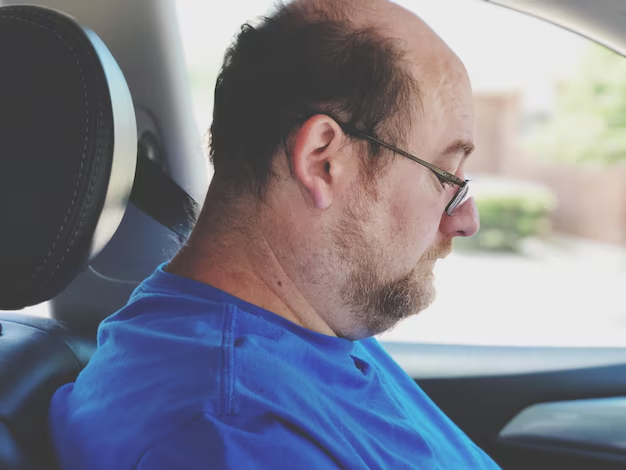Ready to Drive After Cataract Surgery? Here's What You Need to Know
Imagine seeing the world with blurred vision, and suddenly everything becomes clear. This is the magic many experience after cataract surgery. But what about resuming everyday tasks like driving? If you've recently had cataract surgery or know someone planning to undergo the procedure, understanding when it's safe to hit the road is crucial. Let’s delve into this topic, offering a detailed guide to post-surgery driving considerations.
📅 What Is Cataract Surgery and What Can You Expect Post-Procedure?
Cataract surgery is a common, typically straightforward procedure designed to restore clear vision by removing and replacing a clouded lens with an artificial one. It's renowned for its high success rate and relatively quick recovery. While the thought of surgery can be daunting, the improvement in vision often outweighs any temporary inconveniences.
🎯 The Immediate Aftermath
After surgery, most patients notice an improvement in their vision within a day or two. However, it's normal for your eyesight to be blurry initially as the eye heals and adjusts. This early period is critical for healing and requires special care, particularly regarding activities that demand clear vision, such as driving.
🚦 When Can You Drive After Cataract Surgery?
The question of when it’s safe to drive is top of mind for many patients. Though desires to resume normal activities are understandable, patience is essential. Generally, most eye care professionals advise waiting before you get behind the wheel.
H3: The Role of Your Doctor
A key factor in determining when you can drive is your follow-up appointment with your ophthalmologist. During this visit, typically scheduled for a day or two after surgery, your doctor assesses your eye's healing progress and vision clarity. It's advisable to have this professional assessment confirm your readiness to drive to ensure your safety and that of others on the road.
🕐 A General Timeline
While individual recovery varies, here’s a broad overview of what many patients experience:
- Day 1-3: Vision checks confirm improvements but may still have fluctuations.
- Within the First Week: Many regain sufficiently stable vision, pending doctor's approval to drive.
🚫 Conditions That Could Delay Driving
There are certain conditions and sensations post-surgery that could delay your return to driving:
- Blurry Vision: Persisting unclear vision requires refraining from driving.
- Light Sensitivity: If bright lights cause discomfort, it can affect safe driving.
- Eye Discomfort: Any pain or discomfort necessitates further recovery time.
👀 Factors Influencing Safe Resumption of Driving
Understanding the nuances of post-surgery recovery is essential for gauging readiness to drive. Several elements contribute to this readiness.
🌡️ Healing Speed and Individual Health
Some patients have certain health conditions or factors that may affect recovery speed:
- Age: Older adults might have slower healing times.
- Underlying Health: Preexisting health conditions could influence healing.
- Eye Health History: Previous eye surgeries or issues may impact your recovery process.
🔍 Visual Acuity and Legal Requirements
Visual acuity is a measure of the clarity of your eyesight, crucial for driving. Each region may have different legal vision requirements for drivers, typically ranging around 20/40 vision. It’s vital you meet such requirements before driving to ensure safety.
⏰ The Importance of Patience and Safety
Every patient’s recovery experience is unique. While eager to regain independence, such as driving, personal health and safety should remain top priorities. Following medical advice and observing your body's cues can prevent complications, ultimately facilitating faster and safer recovery.
🤔 Addressing Concerns
It's common to feel anxious about resuming regular activities. Here are some tips to ease back into driving confidently:
- Consult Documentation: Review post-operative instructions and follow care guidelines.
- Monitor Symptoms: Stay alert for warning signs of complications like increased pain or changes in vision.
- Communicate with Your Doctor: Regular updates with your healthcare provider can clarify concerns.
🎯 Practical Tips for Post-Surgery Driving Readiness
Navigating recovery involves recognizing readiness and taking proactive steps. Here are some practical insights for seamless transition back to driving:
🔍 Pre-Drive Checklist
- Ensure Rested Eyes: Avoid driving if feeling strained or fatigued.
- Wear Sunglasses: Sun protection aids against light sensitivity and promotes comfort.
- Shorter Trips: Start with brief drives to gauge comfort levels.
- Daylight Driving: Limited night driving can minimize issues related to glare.
🚗 Safe Driving Practices
Employing safe driving habits can boost confidence:
- Stay Attentive: Keep focused on the road and avoid distractions.
- Regular Breaks: If driving long distances, take breaks to rest your eyes.
- Maintain Safe Distances: Driving at a cautious distance from vehicles ahead can help prevent accidents.
✨ Looking Forward: Long-Term Post-Surgery Precautions
While many resume normal activities quickly, long-term care remains vital for sustained eye health.
Follow-Up Appointments
Keeping regular appointments helps monitor the continued health of your eyes, ensuring any post-surgery issues are addressed promptly.
🧼 Maintain Good Eye Hygiene
Proper eye hygiene reduces risks of infection, promoting overall ocular health.:
- Gently clean your eyelids and lashes daily.
- Avoid rubbing or applying pressure to the eyes.
👓 Corrective Lenses
After full recovery, some may require corrective lenses for activities like reading or prolonged computer use. Consult with your ophthalmologist to determine specific needs.
📋 Summary: Key Takeaways for Your Cataract Recovery Journey
Here's a quick checklist for managing your driving approach post-cataract surgery:
- 👀 Wait for Professional Assessment: Confirm vision clarity with your doctor before driving.
- 🕒 Follow a Conservative Timeline: Typically, patients are ready within a week, pending medical clearance.
- 🛑 Recognize Conditions for Caution: Blurry vision, light sensitivity, or pain may delay driving.
- 🚙 Start with Short, Simple Drives: Test comfort with short trips and daylight driving.
- 🔄 Regular Follow-Ups and Hygiene: Continued monitoring and hygiene are crucial for long-term success.
Taking these careful, considered steps can ensure a safe return to driving while maintaining good eye health. Bottom line? Balance optimism with patience, and prioritize safety on your road to recovery!
